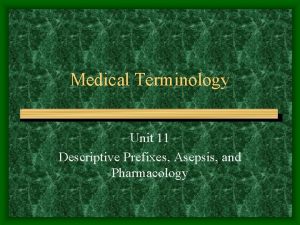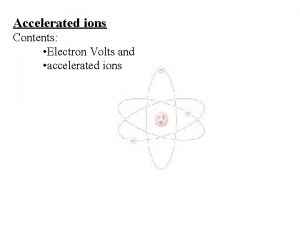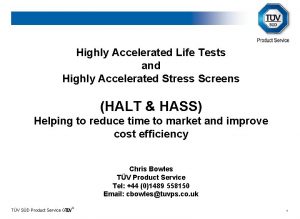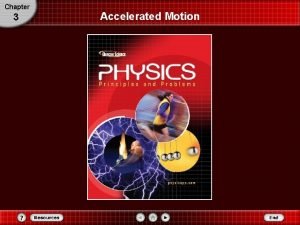When and Where are Impulsive SEPs Accelerated Linghua










- Slides: 10

When and Where are Impulsive SEPs Accelerated? Linghua Wang, Bob Lin, Säm Krucker Space Sciences Lab, UC Berkeley and G. Mason Applied Physics Lab, JHU SSL UC Berkeley 2010 June ACE/SOHO/STEREO/Wind Workshop

The red curves are the best fits to the rise of observations.

Type III Red triangles: Ion injection profiles Ion Delay: 48 21 mins Black triangles: Electron injection profiles

0. 92 ke. V electrons ~ 0. 060 c 1. 67 Me. V/nuc ~ 0. 060 c

Averaged delay of ion release: 1. 2± 0. 2 hours delay of ion release = ion release time – low ( 6 -9 ke. V) energy electron release time

• All have a type III burst, but only one has a type II burst. • Three possibly have a small GOES SXR flare. • Nine have SOHO/LASCO observations. All the nine have a west-limb CME.

CMEs related to electron/3 He-rich SEPs (red crosses) CMEs related to 3 He-rich events are fast and rather narrow. average CME speed average width (excluding halo CMEs)

Summary • Double electron injections at the Sun: one at energies below 6 -9 ke. V, 9. 1 ± 2. 4 min before the release of type III burst (the source of type III burst) a second at energies above 9 -13 ke. V, 8. 2± 0. 6 min (delayed) after type III burst. • Delayed solar injection of 3 He-rich ions: 1. 2 ± 0. 2 hr w. r. t low-energy ( 6 -9 ke. V) e−s ; 0. 9 ± 0. 2 hr w. r. t high-energy (≥ 9 -13 ke. V) e−s ; suggesting a later acceleration.

• These events have no strong SXR flares. • • Among nine events with the SOHO/LASCO observations, all have a fast west-limb CME (>570 km/s). • The majority of the fast CMEs are narrow • delayed (~1 hour) ion acceleration - CMEs ( ~4 Rs at the ion release time) hardly produce high charge states by stripping - electrons waves accelerate 3 He-rich ions ~ 1 hour delay (? ? ? ) ; ~ Altitudes > ~ 0. 5 Rs

NτA ~ 1010 – 1011 s·cm-3 [e. g. , Kocharov et al. , 2000; Kartavykh et al. , 2006], where N is the plasma density and τA is the acceleration time scale. If τA is ~ 1 hour, then N would be ~ 106 – 107 cm-3, corresponding to altitudes >~ 0. 5 Rs, high in the corona. The acceleration mechanism is likely the resonance with wave modes that can preferentially heat/accelerate 3 He and heavy ions due to their unique charge-to-mass ratios [e. g. , Fisk, 1978; Temerin & Roth, 1992; Roth & Temerin, 1997; Miller & Viñas, 1993; Miller, 1998; Liu et al. , 2006; Paesold et al. , 2003] - Interplanetary scattering? ?


















